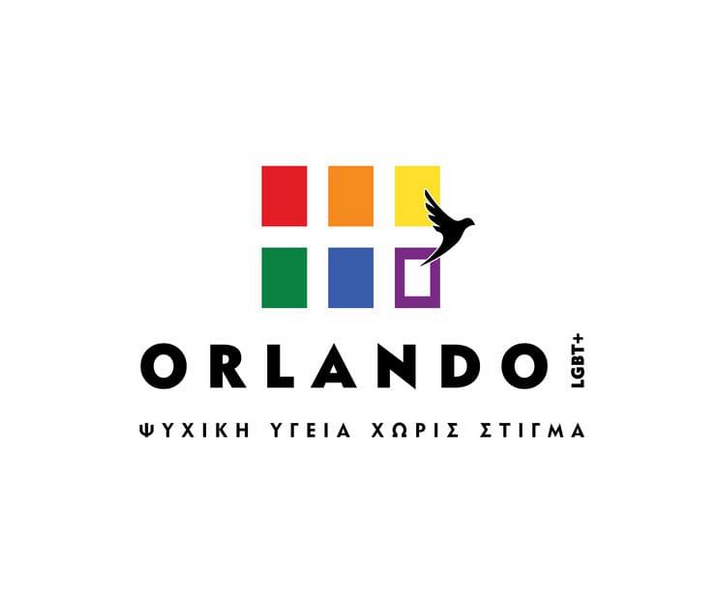Η συγκεντρωτική λίστα με τις παραπομπές από την επιστημονική – ακαδημαϊκή κοινότητα προέρχεται, με την ευγενική παραχώρηση από το Orlando LGBT+
Παπαθανασίου, Ν. & Χρηστίδη, Ε.Ο. (Επιμ.) (2020). Συμπερίληψη και Ανθεκτικότητα: Βασικές αρχές ψυχοκοινωνικής στήριξης σε θέματα σεξουαλικού προσανατολισμού, ταυτότητας, έκφρασης και χαρακτηριστικών φύλου. Αθήνα: Gutenberg.
Perrin, E. C., Siegel, B. S., Pawelski, J. G., Dobbins, M. I., Lavin, A., Mattson, G., … & COMMITTEE ON PSYCHOSOCIAL ASPECTS OF CHILD AND FAMILY HEALTH. (2013). Promoting the well-being of children whose parents are gay or lesbian. Pediatrics, 131(4), e1374-e1383.
Adams, J. M. & Jones, W. H. (1997). The conceptualization of marital commitment: An integrative analysis. Journal of Personality and Social Psychology, 72(5), 1177-1196.
American Psychiatric Association. (1974). Position statement on homosexuality and civil rights. American Journal of Psychiatry, 131, 497.
American Psychological Association. (2020). Resolution on Opposing Discriminatory Legislation & Initiatives Aimed at Lesbian, Gay & Bisexual Persons. Retrieved from the American Psychological Association website
Arm, J., Horne, & Levitt, H. (2009). Negotiating connection to GLBT experience: Family members’ experience of anti-GLBT movements and policies. Journal of Counseling Psychology, 56, 82-96.
Badgett, M. V. L. (2001). The economic penalty for being gay. In Money, myths, and change: The economic lives of lesbians and gay men. (pp. 20-50). Chicago, IL: University of Chicago Press.
Badgett, M. V. L. (2001). Money, myths, and change: The economic lives of lesbians and gay men. Chicago, IL: University of Chicago Press.
Badgett, M. V. L. (2009). When gay people get married. New York: New York University Press.
Balsam, K. F., Beauchaine, T. P., Rothblum, E. D. & Solomon, S. E. (2008). Three-year follow-up of same-sex couples who had civil unions in Vermont, same-sex couples not in civil unions, and heterosexual married couples. Developmental Psychology, 44(1), 102-116.
Balsam, K. F., Beauchaine, T. P., Rothblum, E. D., & Solomon, S. E. (2008). Three-year follow-up of same-sex couples who had civil unions in Vermont, same-sex couples not in civil unions, and heterosexual married couples. Developmental Psychobiology, 44, 102-116.
Berrill, K. T. (1992). Anti-gay violence and victimization in the United States: An overview. In G. M. Herek & K. T. Berrill (Eds.), Hate crimes: Confronting violence against lesbians and gay men (pp. 19-24). Thousand Oaks, CA: Sage Publications.
Blake, S. M., Ledsky, R., Lehman, T., Goodenow, C., Sawyer, R., & Hack, T. (2001). Preventing sexual risk behaviors among gay, lesbian, and bisexual adolescents: The benefits of gay-sensitive HIV instruction in schools. American Journal of Public Health, 91(6), 940-946.
Blumstein, P. & Schwartz, P. (1983). American couples: Money, work, sex. New York, NY: William Morrow & Company.
Brown, S. L. (2000). The effect of union type on psychological well-being: Depression among cohabitors versus marrieds. Journal of Health and Social Behavior, 41(3), 241-255.
Burton, R. P. D. (1998). Global integrative meaning as a mediating factor in the relationship between social roles and psychological distress. Journal of Health and Social Behavior, 39(3), 201-215.
California Opinion Index. (2006, March). A digest on how the public views gay and lesbian rights issues (PDF, 45KB). The Field Poll.
Chauncey, G. (2005). Why marriage?: The history shaping today’s debate over gay equality. New York, NY: Basic Books.
Cochran, S., Sullivan, J. G., & Mays, V. M. (2003). Prevalence of mental disorders, psychological distress, and mental services use among lesbian, gay, and bisexual adults in the United States. Journal of Consulting and Clinical Psychology®, 71(1), 53-61.
Cohen, S., & Wills, T. A. (1985). Stress, social support, and the buffering hypothesis. Psychological Bulletin®, 98(2), 310-357.
Cohen, S., Doyle, W. J., & Skoner, D. P. (1999). Psychological stress, cytokine production, and severity of upper respiratory illness. Psychosomatic Medicine, 61(2), 175-180.
Conger, J. J. (1975). Proceedings of the American Psychological Association, Incorporated, for the year 1974: Minutes of the annual meeting of the Council of Representatives. American Psychologist®, 30(6), 620-651.
Crawford, I., Allison, K. W., Zamboni, B. D., & Soto, T. (2002). The influence of dual-identity development on the psychosocial functioning of African-American gay and bisexual men. The Journal of Sex Research, 39(3), 179-189.
Dasgupta, N. & Rivera, L. M., (2006). From automatic antigay prejudice to behavior: The moderating role of conscious beliefs about gender and behavioral control. Journal of Personality and Social Psychology, 91(2), 268-280.
D’Augelli, A. R. (2000). Sexual orientation. In A. E. Kazdin (Ed.), Encyclopedia of psychology (pp. 225-247). New York, NY: Plenum.
Dohrenwend, B. P. (2000). The role of adversity and stress in psychopathology: some evidence and its implications for theory and research. Journal of Health and Social Behavior, 41(1), 1-19.
Fulcher, M., Sutfin, E. L., Chan, R. W., Scheib, J. E., and Patterson, C. J. (2006). Lesbian mothers and their children: Findings from the Contemporary Families Study. In A. Omoto & H. Kurtzman (Eds.), Sexual Orientation and Mental Health: Examining Identity and Development in Lesbian, Gay, and Bisexual People (pp. 281- 299). Washington, DC: American Psychological Association.
Garnets, L. D., Herek, G. M., & Levy, B. (1990). Violence and victimization of lesbians and gay men: Mental health consequences. Journal of Interpersonal Violence, 5(3), 366-383.
Gates, G. J., Badgett, Badgett, M. V. L., & Ho, D. (2008). Marriage, registration and dissolution by same-sex couples in the U.S. (Williams Institute Census 2000 and Demographic Studies). Retrieved from UCLA School of Law Williams Institute website
Gonsiorek, J. C., & Weinrich, J. D. (1991). The definition and scope of sexual orientation. In J.C. Gonsiorek & J.D. Weinrich (Eds.) Homosexuality: Research implications for public policy, (pp. 1-12). Newbury Park, CA: Sage.
Goodenow, C., Szalacha, L., & Westheimer, K. (2006). School support groups, other school factors, and the safety of sexual minority adolescents. Psychology in the Schools, 43(5), 573-589.
Gove, W. R., Hughes, M., & Style, C. B. (1983). Does marriage have positive effects on the psychological well-being of the individual? Journal of Health and Social Behavior, 24(2), 122-131.
Gove, W. R., Style, C. B., & Hughes, M., (1990). The effect of marriage on the well-being of adults: A theoretical analysis. Journal of Family Issues, 11(1), 4-35.
Green, B. (1994). Ethnic minority lesbians and gay men: Mental health and treatment issues. Journal of Clinical and Consulting Psychology, 62, 243-251.
Harley, D. A., Nowak, T. M., Gassaway, L. J., & Savag, T. A. (2002). Lesbian, gay, bisexual, and transgender college students with disabilities: A look at multiple cultural minorities. Psychology in the Schools, 39(5), 525–538.
Hatzenbuehler, M. L., Keyes, K. M., & Hasin, D. S. (2009). State-level policies and psychiatric morbidity in LGB populations. American Journal of Public Health, 99(12), 2275-2281.
Hatzenbuehler, M. L., McLaughlin, K. A., Keyes, K. M., & Hasin, D. S. (2010). The impact of institutional discrimination on psychiatric disorders in lesbian, gay, and bisexual populations: A prospective study. American Journal of Public Health, 100(3), 452-459.
Heaton, T. B., & Albrecht, S.L. (1991). Stable unhappy marriages. Journal of Marriage and the Family, 53(3), 747-758.
Herdt, G. H., & Boxer, A. M. (1993). Children of Horizons: How gay and lesbian teens are leading a new way out of the closet. Boston: Beacon Press.
Herdt, G., & Kertzner, R. (2006). I do, but I can’t: The impact of marriage denial on the mental health and sexual citizenship of lesbians and gay men in the United States. Sexuality Research and Social Policy, 3(1), 33-49.
Herek, G. M. (2001). Homosexuality. In W.E. Craighead & C.B. Nemeroff (Eds.) The Corsini encyclopedia of psychology and behavioral science, (3rd ed., Vol. 2, pp. 683-688). New York, NY: John Wiley and Sons.
Herek, G. M. (2006). Legal recognition of same-sex relationships in the United States: A social science perspective. American Psychologist, 61(6), 607-621.
Herek, G. M. (2006). Legal recognition of same-sex relationships in the United States: A social science perspective. American Psychologist, 61(6), 607-621.
Herek, G. M. (2009). Hate crimes and stigma-related experiences among sexual minority adults in the United States: Prevalence estimates from a national probability sample. Journal of Interpersonal Violence, 24, 54-74.
Herek, G. M., & Garnets, L. D. (2007). Sexual orientation and mental health. Annual Review of Clinical Psychology, 3, 353-375.
Herek, G. M., Gillis, J. R., Cogan, J. C. (1999) Psychological sequelae of hate-crime victimization among lesbian, gay, and bisexual adults. Journal of Consulting and Clinical Psychology, 67(6), 945-951.
Herek, G. M., Norton, A. T., Allen, T. J., & Sims, C. L. (2010). Demographic, psychological, and social characteristics of self-identified lesbian, gay, and bisexual adults in a U.S. probability sample. Sexuality Research and Social Policy, in press.
Herel, S., Marech, R., & Lelchuk, I. (2004, March 18). Numbers put face on a phenomena; Most who married are middle-aged, have college degrees. San Francisco Chronicle, p. A1.
Hull, K. (2006). Same-sex marriage: The cultural politics of love and law. New York: Cambridge University Press.
Inside-OUT: A report on the experiences of lesbians, gays and bisexuals in America and the public’s views on issues and policies related to sexual orientation (PDF, 661KB). Washington, DC: Author.
Jellison, W.A., McConnell, A. R., & Gabriel, S. (2004). Implicit and explicit measures of sexual orientation attitudes: Ingroup preferences and related behaviors and beliefs among gay and straight men. Personality and Social Psychology Bulletin, 30(5), 629-642.
Kiecolt-Glaser, J. K., McGuire, L., Robles, T. F. & Glaser, R. (2002). Psychoneuroimmunology: Psychological Influences on Immune Function and Health. Journal of Consulting and Clinical Psychology, 70(3), 537-547.
Kiecolt-Glaser, J.K. & Newton T.L. (2001). Marriage and Health: His and Hers. Psychological Bulletin 127(4) 472-503.
Kurdek, L. A. (1995). Lesbian and Gay Couples. In D’Augelli, A. R., Patterson, C. J. (Eds.) Lesbian, Gay, and Bisexual Identities Over the Lifespan (pp. 243-261) New York, NY: Oxford University Press.
Kurdek, L. A. (2004). Are gay and lesbian cohabiting couples really different from heterosexual married couples? Journal of Marriage and Family, 66, 880-901.
Kurdek, L. A., (1998). Relationship Outcomes and their Predictors: Longitudinal Evidence from Heterosexual Married, Gay Cohabiting, and Lesbian Cohabiting Couples. Journal of Marriage & the Family, 60(3), 553-568.
Kurdek, L. A., (2001). Differences Between Heterosexual-Nonparent Couples and Gay, Lesbian and Heterosexual-Parent Couples. Journal of Family Issues, Vol 22(6), 727-754.
Kurdek, L. A., (2004). Are Gay and Lesbian Cohabiting Couples Really Different from Heterosexual Married Couples? Journal of Marriage and Family, Vol 66(4), 880-900.
Kurdek, L. A., (2005). What do we know about gay and lesbian couples? Current Directions in Psychological Science, 14(5), 251-254.
Levinger, G. (1965). Marital Cohesiveness and Dissolution: An Integrative Review. Journal of Marriage & the Family, 27(1), 19-28.
Mackey, R. A., Diemer, M. A., & O’Brien, B. A. (2000). Psychological intimacy in the lasting relationships of heterosexual and same-gender couples. Sex Roles, 43(3-4), 201-227.
Marech, R. (2004, March 9). Same-sex couples flock to gay-friendly Canada. The San Francisco Chronicle, pp. A1.
Marech, R. (2004, September 20). Gays cautious about new partners law: Some opt out, fearing legal or financial troubles. The San Francisco Chronicle.
Mays, V. M., & Cochran, S. D. (2001). Mental health correlates of perceived discrimination among lesbian, gay, and bisexual adults in the United States. American Journal of Public Health, 91(11), 1869-1876.
Meyer, I. H. (1995). Minority stress and mental health in gay men. Journal of Health and Social Behavior, 36(1), 38-56.
Meyer, I. H. (2003). Prejudice, social stress, and mental health in lesbian, gay, and bisexual populations: Conceptual issues and research evidence. Psychological Bulletin, 129(5), 674-697.
Meyer, I. H., Schwartz, S., & Frost, D. M. (2008). Social patterning of stress and coping: Does disadvantaged status confer excess exposure and fewer coping resources? Social Science & Medicine, 67, 368-379.
Mills, T. C., Stall, R., Pollack, L., Paul, J. P., Binson, D., Canchola, J., & Catania, J. A. (2001). Health-related characteristics of men who have sex with men: A comparison of those living in “gay ghettos” with those living elsewhere. American Journal of Public Health, 91(6), 980-983.
Murray, J. E. (2000). Marital protection and marital selection: Evidence from a historical-prospective sample of American men. Demography, 37(4), 511-521.
Nardi, P. M. (1997). Friends, lovers, and families: The impact of AIDS on gay and lesbian relationships. In M. P. Levine & P. M. Nardi (Eds.), In changing times: Gay men and lesbians encounter HIV/AIDS (pp. 55-82). Chicago, IL: University of Chicago Press.
National Association of Social Workers. (2003). Lesbian, gay, and bisexual issues. Social Work Speaks: National Association of Social Workers Policy Statements 2003-2006 (6th ed., pp. 224-235). Washington, DC: NASW Press.
National Gay and Lesbian Task Force. (2010). Relationship recognition map for same-sex couples in the United States. Retrieved from the National Gay and Lesbian Task Force website
Nock, S. L. (1995). A comparison of marriages and cohabiting relationships. Journal of Family Issues, 16(1), 53-76.
Peplau, L. A. & Fingerhut, A. W. (2007).The close relationships of lesbians and gay men. Annual Review of Psychology, 58, 405-424.
Peplau, L. A., & Fingerhut, A. W. (2007). The close relationships of lesbians and gay men. Annual Review of Psychology, 58, 405-424.
Peplau, L. A., & Garnets, L. D. (2000). A new paradigm for understanding women’s sexuality and sexual orientation. Journal of Social Issues, 56(2), 329-350.
Pragmatic Americans liberal and conservative on social issues (PDF, 125KB). Washington, DC: Author.
Previti, D., & Amato, P. R. (2003). Why stay married? Rewards, barriers, and marital stability. Journal of Marriage and the Family, 65(3), 561-573.
Resolution on sexual orientation and marriage. Retrieved from the American Psychological Association website
Resolution on sexual orientation, parents and children. Retrieved from the American Psychological Association website
Ross, C. E. (1995). Reconceptualizing marital status as a continuum of social attachment. Journal of Marriage and the Family, 57(1), 129-140.
Ross, C. E., Mirowsky, J., & Goldsteen, K. (1990). The impact of the family on health: The decade in review. Journal of Marriage and the Family, 52(4), 1059-1078.
Rostosky, S. S., Riggle, E. D. B., & Horne, S. G. (2009). Marriage amendments and psychological distress in lesbian, gay, and bisexual (LGB) adults. Journal of Counseling Psychology, 56, 56-66.
Rostosky, S. S., Riggle, E. D. B., Horne, S. G., & Miller, A. D. (2009). Marriage Amendments and Psychological Distress in Lesbian, Gay and Bisexual (LGB) Adults. Journal of Counseling Psychology, 56, 56-66.
Russell, G. M. (2000). Voted out: The psychological consequences of anti-gay politics. New York, NY: New York University Press.
Same-sex couples and the gay, lesbian, and bisexual population: New estimates from the American Community Survey (PDF, 2.08MB). Retrieved from UCLA School of Law Williams Institute website
Sherrill, K. & Yang, A. S. (2000). From outlaws to in-laws: Anti-gay attitudes thaw. Public Perspective, 11, 20-23.
Simmons, T. & O’Connell, M. (2003). Married-couple and unmarried-partner households: 2000 (PDF, 503KB). Washington, DC: U.S. Census Bureau.
Stack, S. & Eshleman, J. R. (1998). Marital status and happiness: A 17-nation study. Journal of Marriage and the Family, 60(2), 527-536.
Tasker, F. (2005) Lesbian mothers, gay fathers and their children: A review. Journal of Developmental & Behavioral Pediatrics, 26, 224-240.
Tsang, J. A., & Rowatt, W. C. (2007).The relationship between religious orientation, right-wing authoritarianism, and implicit sexual prejudice. International Journal for the Psychology of Religion, 17(2), 99-120.
White, L. K., & Booth, A. (1991). Divorce over the life course: The role of marital happiness. Journal of Family Issues, 12(1), 5-21.
Williams, K. (2003). Has the future of marriage arrived? A contemporary examination of gender, marriage, and psychological well-being. Journal of Health and Social Behavior, 44(4), 470-487.




